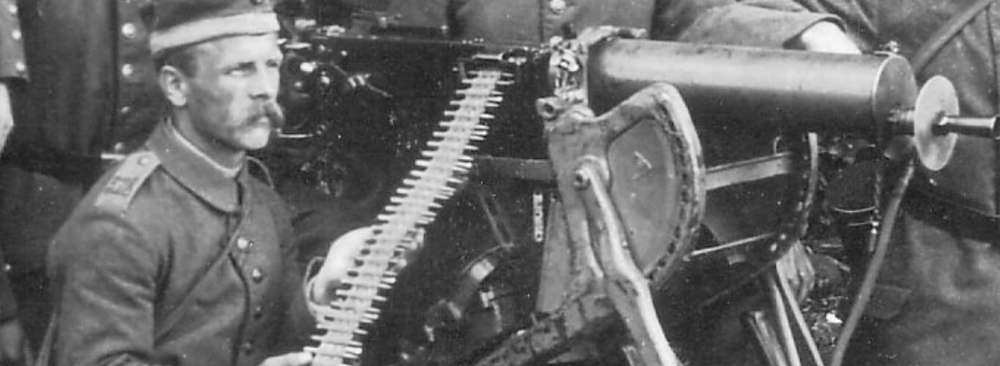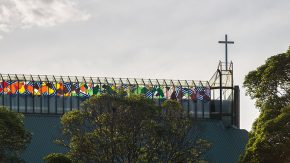Mystery of the Machine Gun Memorial
When Newington’s familiar First World War memorials — the ‘Memorial to the Dead’, between the Centenary Hall and the Chapel, and the Honour Roll, in the Vestibule of the Founders Building — were formally dedicated by the Governor-General, Lord Foster, on 11 May 1922, a third memorial, in the form of a captured German heavy machine gun, was also unveiled.
The Sydney Morning Herald of 15 February 1921 reported on the recommendations of a committee of local government representatives for the distribution of ‘war trophies’ — trench mortars, artillery pieces and machine guns captured by Australian forces during the war — to municipalities and schools around Sydney. Newington College was to receive a heavy machine gun captured near Waincourt, during the breakthrough of the Hindenburg Line, by Lieutenant Joseph Maxwell, VC, MC & Bar, DCM, of the 18th Battalion, one of Australia’s most highly decorated soldiers of the war. Maxwell had no connection to Newington and no specific reason is apparent for this trophy being assigned to the College.
In dedicating the three memorials, Lord Foster declared that it was a very fitting sequence to unveil the Honour Roll first, then the Machine Gun, and lastly the Memorial to the Dead, ‘for the token of victory stands between the two emblems of service and sacrifice.’ The report of the event in The Newingtonian, however, describes the gun as having been captured by the 19th Battalion at Estrees. Here is our first mystery: was the machine gun unveiled that day the same as that assigned to Newington the year before, or was it a different one? Waincourt was not far from Estrees: did the two descriptions refer to the same event? The 18th and 19th Battalions attacked side by side on 3 October 1918, the day of Maxwell’s exploit: did one unit claim the other unit’s capture, or was there a simple mistake in The Newingtonian’s report? Maxwell is reported to have captured two German machine guns that day, winning his Victoria Cross: did Newington receive a different gun, also captured by Maxwell? We shall probably never know.
We know that the machine gun was installed at one stage in front of the Founders Building beside the flagpole and at another time on a small dais in the Vestibule. In his 1999 College history, Newington Across the Years, Rev Dr Peter Swain reports that, ‘Unfortunately, at some time or other the gun disappeared and has never been recovered.’ Here is our second mystery: what happened to the Machine Gun Memorial and where is it now?
Mr David Roberts
College Archivist






